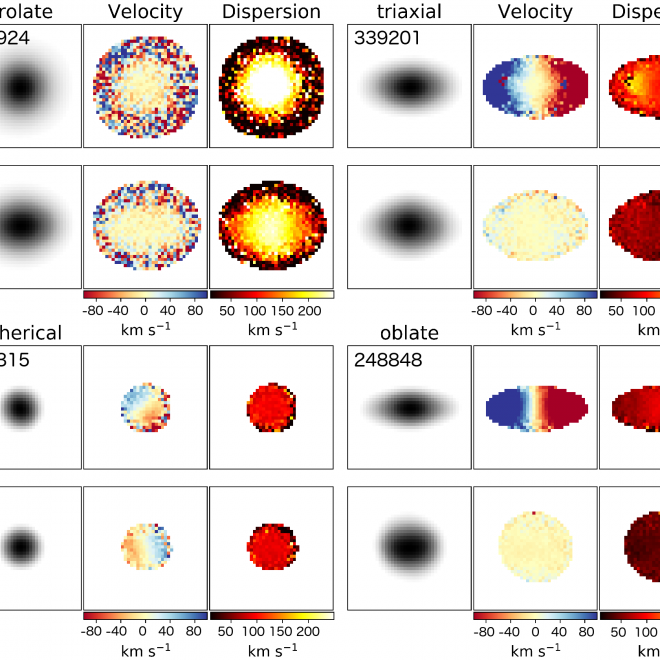Shaping a Galaxy – Suk Yee Yong
Suk Yee Yong undertook an ADACS internship from August to November 2019 while a final year PhD student at
the University of Melbourne.
The dream of understanding the shapes of faraway galaxies is not new. The problem is that our images of the universe are 2-Dimensional. So, the question is, how do we infer the 3D shapes of galaxies from 2D images?
Dr Robert Bassett set out to answer this complicated question, with Suk Yee Yong embarking on an internship with ADACS to work on the project.
Among the multitude of galaxies, which vary in size, direction of rotation, and so on, there are essentially four different shape classes based on their 3D axes ratios. Taking the information from a 2D projection of a galaxy and inferring the 3D shape is challenging, due to the multitude of variables that need to be considered.
Given this, Dr Robert Bassett and Suk Yee Yong had a vision to utilise machine learning to recover the 3D shape of a simulated galaxy from its 2D projection, and to assess the accuracy with which the model reflected its known 3D shape. They wished to construct a model which can be utilised in future to recover the shapes of “true” galaxies.
Through this technique, and with support from the Data Science Research Institute, Suk Yee Yong input those parameters thought to be important in the prediction of the galaxy shape. These were entered into a neural network – The Mixture Density Network – which provided a probability estimation of whether each parameter was important in giving information about the shape of the galaxy.
Throughout the course of the internship, Suk Yee Yong attempted to recover the known 3D shapes of simulated galaxies by repeatedly inputting 1000 galaxies, observed in 50 independent 2D projections, all boiling down to 2 numbers: the ellipsoidal axes ratios, which in turn gives us the shape of the galaxy. Machine learning involves ‘training’ the computer by feeding in the data and telling it whether it’s subsequent analysis is right or wrong. When it had encoded the data correctly, Suk Yee Yong trained the data set so that it can (in the future) correctly predict real galaxies.
The project was a great success! The final model was indeed able to accurately reflect the shape of the galaxy, using multiple features including ellipticity (how flat the galaxy is), spin, angular momentum, mass, star formation rate and more.
This was the first study to utilise machine learning to recover the 3D shape of a galaxy, and it was a victory: Suk Yee Yong has constructed a model that has allowed us to do something that has only been a pipe dream thus far. Furthermore, it has provided an important insight into whether specific parameters are even helpful in the prediction of galaxy shape, identifying, approving or discarding parameters which have previously been assumed to be vital. This research provides a crucial foundation that can be used in future research to derive galaxy shapes from 2D images.
Knowing the shapes of galaxies can help us to better understand the universe we live in. This exciting project has provided a crucial step forward in our ability to interpret the 2D pictures that are captured of our vast and complex universe.


